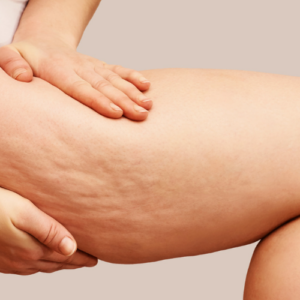
Recurring acne breakouts can be a frustrating experience. However, that’s not all. The scars that acne breakouts can leave behind can be equally frustrating. Some people would say that the only thing worse than acne are the recurrent scars and they would be right. Even if you follow good skincare routines religiously, the spots, red marks and scars that follow an acne outbreak can be downright ugly.
Nobody wants their appearance to be marred by acne scars. Thinking of how to fade acne scars? Or maybe you are searching for a treatment for acne scars in Toronto? There is a solution for you. Acne scars can be treated effectively. Advances in the field of medical aesthetics mean that there are effective treatments that can take care of your acne scars once and for all.
There are several effective options that you can choose. This article will show you our top picks for fighting acne scars. In it, we will also discuss our recommended treatment for fighting acne scars.
Before we move forward, you should know that it is not advisable to carry out treatment for acne scars while still suffering from acne breakouts. If you still suffer from breakouts, inflammation can still lead to the development of acne scars.
Related article: 7 Easy Tips to Be Acne Free
Types of acne scars
Knowledge is power. Before you start making an informed choice on how to get rid of acne scars? It is best that you know the type of prevalent acne scars. Some of the most common forms of acne scars include:
Atrophic Scars
Also known as depressed scars, these types of scars are commonplace on the face. Usually, they sit below the skin in the surrounding area, hence the name. Atrophic scars are formed due to a lack of collagen during the healing process. Atrophic scars can further be divided into:
- Boxcar: These occur in the form of U-shaped scars with sharp edges. They are usually shallow but can also be deep. Shallow boxcar scars respond faster to skin resurfacing treatments.
- Ice pick: These types of scars are narrow shaped with a V-shape. They usually sit deep within the skin. Sometimes, they may also look love oval shaped holes. They are challenging to treat since they seat deep within the skin’s surface.
- Rolling: They are described as broad depressions complete with irregular appearances and a rounded edge.
Hypertrophic scars
Also known as raised scars, these types of scars are common with back and chest acne. Usually, they sit above the surface of the skin. They are caused by the body’s overproduction of collagen during the healing phase.
Dark Spots
Some people refer to dark spots as acne scars. If you have dark spots on your face following an outbreak of pimples, you don’t have a scar. Dark spots are not ideal. However, the good news is that they often disappear on their own. Over time, they will fade completely.
Recommended treatment for acne scars
Acne scars are uncomfortable. We know that. That is why here at Canada MedLaser, we have designed the best strategy to get rid of acne scars in Toronto. The best way to answer the question of how to fade acne scars is with the use of Fractional CO2 lasers acne. How does laser resurfacing work? Keep reading to find out.
Related article: The Fastest Way to Clean Up Acne Scars
Fractional laser treatment
Fractional energy from the laser targets the collagen and water in your skin. In doing so, it improves the texture of pigments, acne scars and facial wrinkles. This treatment directs microscopic batches of laser beams through your skin and to the dermis. This laser energy heats the dermis, stimulating the production of elastin as well as collagen. The end result is an all-around smoother look.
Following your first treatment, you can expect an improvement of up to 60% in the outlook of scars. For years now, Fractional CO2 lasers have been considered the gold standard in skin resurfacing attempts. These lasers use a microscopic beam that is highly accurate. This means that they are more effective and require less recovery time.
Fractional CO2 lasers are a direct improvement on the old lasers. These lasers tended to have side effects that could last for several weeks and required more downtime. With fractional resurfacing, you only need a few days to recover fully. Fractional lasers use ultra pulse light energy or continuous light beams delivered via a scanning pattern. This helps your medical aesthetician to get rid of damaged layers of your skin with minimal damage.
Applications of CO2 lasers
Fractional Co2 lasers can be used to resurface acne scars effectively. However, that’s not all. These devices can also be used for:
- Sagging skin
- Periorbital as well as perioral wrinkles
- Hyperpigmentation
- Stretch marks
- Photoaging changes on your skin
Related article: Chemical Peel Vs. Laser Resurfacing Treatments
What are the results of fractional CO2 lasers?
Depending on your type of acne scars, treating them with CO2 lasers can take anywhere between 8 – 24 weeks. During this period, you will see definitive improvements in the quality of your skin.
Two days after your first treatment session, new skin cells will be formed as a result of the stimulation provided by the laser beams. Your epidermis will be restored while fresh collagen will be produced adequately. Within 3-6 days after your first treatment, you will begin to see visible results. Full recovery from your first session should be completed in 7 days. This is a gift compared with the fantastic results that you will see.
The direct result of these changes manifests in the fading of scars, skin regeneration, removal of stretch marks, skin tightening and minimizing skin pores. Fractional CO2 laser resurfacing only treats about 20% of the affected area with each treatment session. This means that you will need multiple treatments to fade acne scars completely.
What should you expect during your treatment?
Laser resurfacing is a non-invasive procedure. Therefore, it can be done as an outpatient procedure. Consequently, you don’t have to stay in hospital overnight. Within thirty minutes to a few hours, your medical aesthetician can adequately handle your resurfacing needs.
The amount of time the procedure will take is dependent on the region of your face that is being treated. Generally, anesthesia is not used for laser resurfacing. Although, you can demand it if your pain thresholds are not high.
Following treatment, your doctor will bandage the treated area. The following aftercare tips should be followed:
- Clean the area 3-5 times daily. This should start 24 hours after the treatment session.
- Apply an ointment such as petroleum jelly to the treated area. This will prevent the formation of scabs.
How does fractional laser resurfacing work?
During the procedure, a microscopic CO2 laser is used to make microscopic perforations on your skin. It then directs laser beams at already predetermined points in your dermis. These laser beams cause the treated area to heat up, stimulating the production of collagen and new skin cells.
Related article: Skin Resurfacing – which is the best treatment for you?
Side effects of fractional laser resurfacing
Fractional laser resurfacing has fewer side effects than you would expect. Nevertheless, it is important that you be aware of them. The most common side effects include:
- Skin redness
- Skin irritation
- Swelling
- Itching
It is normal for your skin to swell following the treatment. Your medical aesthetician may prescribe that you use steroids to manage the swelling. Additionally, sleeping on a raised pillow every night will help you manage the swelling. The use of an ice pack at regular intervals during the day will help you reduce swelling.
Itching may persist for up to 3 days following your treatment. Also, your skin will dry and peel 5-7 days after the procedure. This is an indication that your skin is healing properly. After your wound heals properly, you can use makeup to hide skin redness.
Your skin may appear to have a lighter complexion following repeated treatments. This is very normal. Over time, your complexion will eventually even out. Also, it is essential that you use a sunscreen with a protection factor of at least 30. If possible, limit your time in the sun following your treatment. Hats, caps and sunglasses can protect your skin from the harmful effects of the sun adequately.
Complications associated with Laser Skin Resurfacing
Fractional laser resurfacing will help you fade scars and leave you with great looking skin. However, there are complications that can result from the procedure. These complications are usually a direct result of working with inexperienced “experts” or a failure to adhere to instructions from your medical aestheticians. Some of these complications include:
- Burns caused by heat from the laser
- Permanent scarring
- Infections
- Reactivation of herpes sores
- Drastic changes in skin pigmentation
To avoid suffering any of these complications, it is essential that you make sure your treatment is only carried out by certified professionals. Also, make sure that you follow any advice provided by your medical aesthetician.
Cost of fractional laser resurfacing
Beauty often comes at a price. To be candid, the cost of laser resurfacing using CO2 lasers does not come cheap. However, it is crucial that you know that the benefits far outweigh the cost of the treatment.
On average, fractional laser resurfacing can cost between $1,100 – $2,500. The actual cost of your treatment depends on the location where the procedure is carried out, the area of your face that is being treated and the expertise of your medical aesthetician.
Related article: Are Skin Rejuvenation Treatments Worth The Money
Other treatment options for acne scars
Different methods can be used to fade acne scars. Laser resurfacing is preferred due to its effectiveness and ease of recovery. If you are searching for other ways to get rid of acne scars, you can choose from any of the following:
Dermal Fillers
Also known as soft tissue fillers, they work by injection. A trained expert injects these fillers under your skin to add contour, volume and shape to scars. They can help you improve the texture of your skin while reducing the appearance of scars. Typically, dermal fillers can last for anywhere between 1-3 years. You may need repeated treatments at different intervals to improve the appearance of scars.
Dermabrasion
Dermabrasion is another effective treatment that is used to improve facial scars. During dermabrasion, an expert uses a special wire brush to exfoliate the upper layer of your skin deeply. This prompts the production of new skin cells and exposes the newer, radiant, layer underneath. It is perfect for treating shallow boxcar scars.
Chemical peels
Chemical peels are different from your run of the mill facial masks. They work using a strong acid. Hence, they should only be handled by professionals. Chemical peels remove the top layer of the skin in a bid to reduce the appearance of scars.
There are different types of chemical peels available for your use. Therefore, it is advised that you talk it over with your aesthetician before undergoing a chemical peel. The best part about chemical peels is the fact that they work for all types of scars.
Fotofacials
This is a relatively new method of fading scars. It works by directing light beams with high energy on the scars themselves. It can work for acne scars on the face, back and neck.
They are great for people who are looking for painless ways to get rid of scars. This treatment stimulates collagen production. The downside to photofacials is the amount of time it takes to see visible results. You may need up to 5 treatments before you enjoy visible results.
Blue light therapy
Blue light therapy is a great option for treating acne scars. In addition to treating acne scars, they can be used to treat freckles, spider veins, hyperpigmentation and rosacea.
Blue light therapy is also notable for its ability to kill infections and bacteria. In addition to treating acne scars, it can also be used to prevent acne flare-ups. Blue-light therapy usually requires weekly treatment sessions.
Microneedling
Microneedling involves the use of small rollers studded with needles on the surface of scars. These needles are tiny and specialized. They are designed to puncture your skin without going through it. The direct result is the stimulation of collagen production.
Micro-needling helps reduce the appearance of scars. However, it can take up to nine months before you begin to experience visible results. It is best combined with a more intensive means of treatment.
Injections
Injections are a simple method of dealing with acne scars. They are mostly valid for treating raised scars. Injections such as corticosteroids and fluorouracil help to flatten raised scars. These Injections are best spread out over multiple weeks.
Related article: What are the treatments for acne scars?
Home remedies for acne scars
This article will not be complete without discussing home treatments that you can use to combat acne scars effectively. It should be mentioned that these remedies are not a substitute for the medical treatments listed above. In fact, before you use any home remedies or products, it is important that you consult with a medical aesthetician.
Effective home remedies for acne scars include:
Alpha hydroxy acids
Alpha hydroxy acids work by removing dead skin and unclogging blocked skin pores. Even better, they are effective in making acne scars less noticeable. They are mild acids that exfoliate the rough outer layer of your skin. This helps remove discoloration of any kind and reduce the prominence of scars. You can search for products that contain alpha hydroxy acids. Don’t use any product without the approval of your medical aesthetician.
Lactic acid
Lactic acid peels can improve the appearance of acne scars. Serums, ointments and peels with lactic acid can be used every 2-3 weeks over several months to improve the appearance, pigmentation and texture of scars. You can also make use of diluted apple cider vinegar if you don’t have to access to natural lactic acid.
Retinoids
Topical Retinoids can be effective at smoothing out the appearance of scars. They help to speed up cell regeneration while improving the texture of your skin. Topical retinoids are effective at reducing skin discoloration and making scars less noticeable. As much as possible, try to make use of products that list retinoids as an active ingredient.
Salicylic acid
Salicylic acid is a major component of just about every acne treatment you can think of. Most facial cleansers, lotions and ointments already make use of salicylic acid to fight acne scars. Salicylic acid clears your pores and exfoliates your skin. It is considered as an effective treatment for acne scars.
You can incorporate products that contain salicylic acid into your daily routine. In addition, you can ask your medical aesthetician if you can incorporate salicylic acid into your chemical peels treatments.
It may take a few weeks for you to experience any visible changes with salicylic acid. Also, it. can also cause irritation and dry skin. Take proper care when using salicylic acid.
Acne scars are not a death sentence. Sure, they may be uncomfortable and borderline annoying. However, the right treatment plan can help you get rid of them. Our experts here in Toronto can show you how to get rid of acne scars. More importantly, they can plan out effective treatment options and schedules for you. Contact us today!
Book Free Consultation
"*" indicates required fields
-
Facebook
-
Twitter
-
Linkedin





